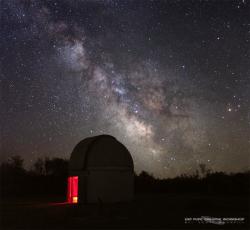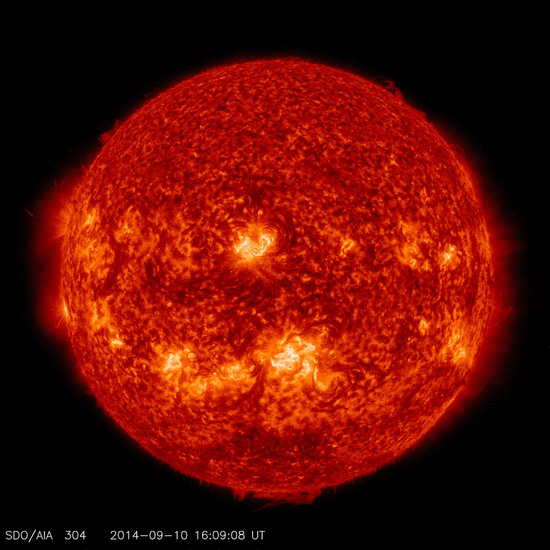
Public Stargazing
- Where:
- Frosty Drew Observatory
- When:
- Friday September 12, 2014 at 7:30 p.m.
- Cost:
- $1 Suggested Donation per Person
Tonight's forecast for mostly clear to clear skies is looking rather favorable for stargazing. The bright 75% waning gibbous Moon will rise at 9:22 p.m. offering fabulous views of the lunar surface, though it will also significantly brightening the sky reducing our visibility of nebulae, galaxies and other deep sky objects. We plan to open the Observatory and Sky Theatre at 7:30 p.m. In the Sky Theatre we will be showing a slide show of celestial objects photographed at Frosty Drew. In the Observatory, telescopes will start off with late season views of Saturn. Once the Moon rises high enough in the East we will observe its extensively cratered surface. As the night progresses, a mesmerizing list of binary stars are in store for viewers as we contend with bright moonlight. Additionally, we have a level 3 geomagnetic storm prediction for tonight. This will bring a high probability for Auroras to our night sky at Frosty Drew! Overall it should be an excellent night under the stars, though that bright Moon will likely keep longer distance travelers home for the night, unless a shot at the fabled Northern Lights makes it worth it.
-------------------------------------------------------------------------
Weekly Happenings
Scott MacNeill
After a long period of non-activity on the relatively quite solar photosphere, we have seen a dramatic shift back to sunspot awesomeness with choice flares, CME's and overall killer activity on the Sun this past week. Staring Tuesday (September 9th) the magnetic canopy of sunspot AR2158 erupted for a period of 6 hours producing a strong Coronal Mass Ejection (CME). Though the CME was not Earth directed, a glancing blow grazed Earth's magnetosphere last night producing a level 1 geomagnetic storm (G1). Today, reports of visible aurora have been coming in from as far south as Arizona. So that in itself is pretty hot, but then on Wednesday (September 10th) sunspot AR2158 blasted a huge X1.6-class solar flare and CME directed straight at Earth! This new event will bring a high probability of a level 3 geomagnetic storm (G3) late this afternoon – early Saturday morning. A G3 storm will very likely bring the Aurora Borealis to mid-latitude skies, meaning that Rhode Island is setup for a possible showing of the mystical Northern Lights this weekend.
A geomagnetic storm is the result of a CME or other high speed stream of solar material interacting with Earth's magnetosphere (the region around Earth where Earth's magnetic field has the dominant magnetic influence). When a CME slams into Earth's magnetosphere it will significantly degrade Earth's magnetic field strength, allowing for plasma in the solar wind to drop into Earth's upper atmosphere. These energized particles will ionize nitrogen and oxygen in the upper atmosphere releasing photons which display as Aurora.
Observing the fabled Lights is not all that hard. The trick is finding a dark location with an open view of the sky, specifically looking North. The Moon will make for increased difficulty in observing the aurora, as moonlight can significantly illuminate the sky in a fashion similar to light pollution. Auroras can appear as ribbons of green and purple light dancing along the night sky or as a red and purple glow covering a large part of the sky. Get out there this weekend and possibly catch a glimpse of the fantastic Northern Lights!
Watch the X-Flare:

-Scott

